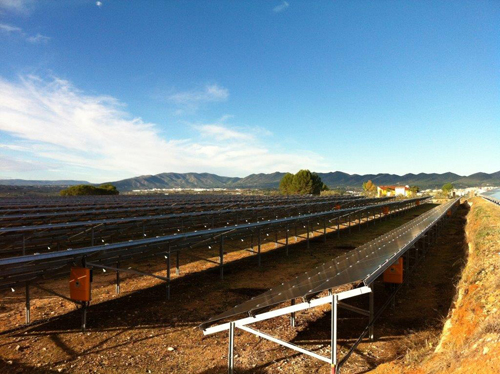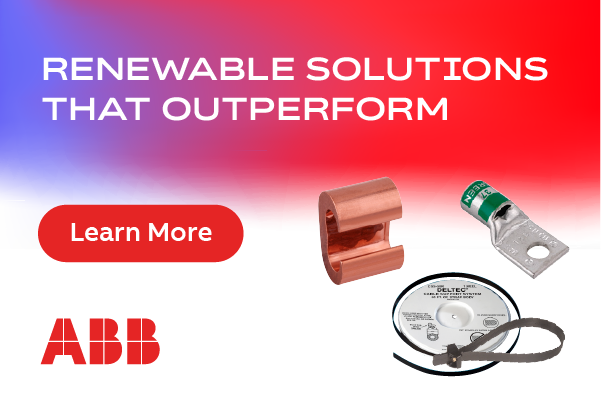Smart Technology: The future of solar PV
 The US solar photovoltaic (PV) market has matured considerably over the past few years. Through trial and error, some gains and losses, and financial hardships, technology companies and investors, alike, have learned some hard lessons along the way. But, as we approach the midway point of 2014, the solar market is demonstrating that it is resilient, and it continues to efficiently and successfully execute major projects from east to west.
The US solar photovoltaic (PV) market has matured considerably over the past few years. Through trial and error, some gains and losses, and financial hardships, technology companies and investors, alike, have learned some hard lessons along the way. But, as we approach the midway point of 2014, the solar market is demonstrating that it is resilient, and it continues to efficiently and successfully execute major projects from east to west.
Not only has the national PV market grown 15% since 2012, it has also become the leading market outside of Asia-Pacific. New solar energy installations reached a record, 4.2 gigawatts (GW) in 2013, according to NPD Solarbuzz, and ongoing research and development (R&D) is in full swing.
Next on the horizon
The last few years have been ripe with change for the solar industry. In 2013, the market saw significant consolidation, with deals like Advanced Energy acquiring REFUsol and ABB gobbling up Power-One. Despite some losses, this activity helped not only validate and define the market and major players, but opened the door for some new life as well. While some organizations were busy with integration changes and challenges, a few new companies developed on the horizon, eager to help grow the industry and capitalize on renewable energy.
It seems a new era of “smarter” PV inverters are in the works that will help continue to push solar forward as a leading renewable source of energy. After all, as the competitive landscape has changed, so, too, have technology and adoption rates across the PV markets.
Commercial adoption might have been relatively flat in 2013, but there’s a continual rise in residential and utility-scale development. To serve utility growth, in particular, it appears that three-phase string inverters in the 15 to 30 kilowatt (kW) range will likely have the highest adoption rates in the US over the next three years.
By the end of 2014, however, it’s probable that a significant shift will occur toward more five-megawatt (MW) plants leveraging string inverters. Eventually, the US market may even follow European trends more closely, and transition from two-megawatt projects to distributed PV plants that are more in the 20 MW to 40 MW range.
Supply & demand
Increased demand across all of the segments—residential, commercial, and utility—will drive significant pricing pressures. For this reason, power purchase agreements and tax credits will continue to be integral in advancing solar power projects. In fact, many vendors are already bracing for the rush to complete their solar investment before the impending deadline for the 2016 elimination or reduction of the federal investment tax credit (ITC).
This will likely expedite projects in California and Arizona, the earliest leaders in adoption, with many projects already underway in the pipeline. Growth will also increase in up-and-coming areas, such as in the Midwest, as well as in Texas, Georgia, and the Northeast.
Research & technology
Some hot technology developments to watch for this year includes silicon carbide component advancements, which will help push PV inverters to near-perfect efficiency. Additionally, the first serious projects involving solar and energy storage are already in development. The energy/storage combination is essential to making PV projects more cost-competitive and desirable, particularly on a larger scale.
One of the most formidable challenges and opportunities occurring is around the emergence of advanced network planning and grid-control solutions. As more large-scale PV installations tie into the utility grid, better interconnection and integration will enable utilities to embrace distributed solar energy, while improving their overall service to customers.
Of course, inverters will maintain their position as the interface point between safe and efficient renewable power generation. However, grid stability will continue to evolve on multiple fronts, serving to better support solar energy, and other applications.
Some of the key PV inverter advancement initiatives to watch include:
• Safety. With built-in support to ensure the safety of first responders;
• Automation. An ability to remotely command adjustments in operating algorithms;
• Security. Web-enabled solutions that provide for simpler and easier remote operations (in a secured environment);
• Integration. A combination of system integration and communication with storage solutions that allow for dynamic adjustment of power loads; and
• Intelligence. The emergence of smart inverters—digitalized and adaptive, these inverters can quickly receive and transmit important data, optimizing performance and allowing for better service.
This new generation of smart inverter technology exists that automatically detects and responds to changing energy and grid conditions, so as to better help stabilize power shifts. For example, smart inverters have the ability to:
• Adjust output, including reactive power throttling and injection;
• Make autonomous dynamic power output adjustments that can sync with changing grid conditions; and
• Communicate bi-directionally—not only reporting data in real-time, but also supporting external power controller commands.
Smart inverters also allow for adjustments to grid conditions, allowing remote throttling or remote shutdown, even adjusting basic decision algorithms (which inverters use for response). For this to be successful, however, communication protocols must be secure and easy for operators and installers.
Conclusion
As the PV inverter industry matures, it’s important that any related technology and service components advance at the same time. In fact, it’s likely that maintenance will emerge as a key differentiator for companies in this smart inverter era, as organizations look to make longer-term investments. Many inverters are designed to have a lifespan of 20 to 25 years, which is a long time to be exposed to harsh environmental influences.
To keep up with new technologies and new demands, successful solar energy companies will need to deliver newer and better maintenance plans to the make sure their equipment holds up to wear and tear over time, are updated to the latest standards and function as promised.
A high-tech and solar PV industry veteran, Alan Beale is the general manager of SolarMax USA, Inc. He heads the company’s US office, leading sales, marketing, and growth in this market.
SolarMax USA, Inc.
www.solarmax.com
Author: Alan Beale
Volume: May/June 2014











.png?r=7938)
